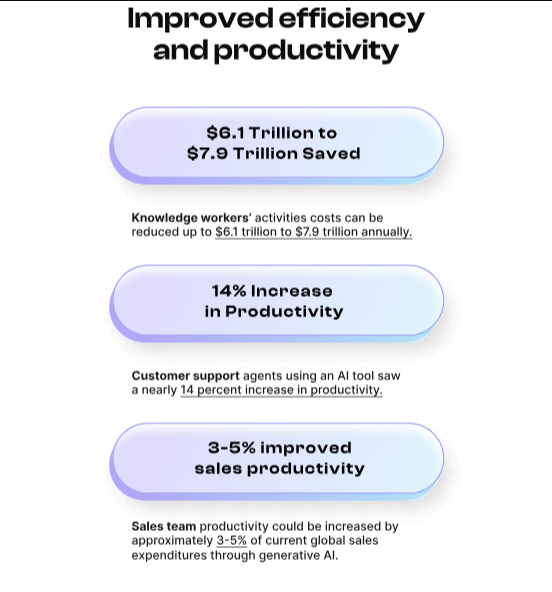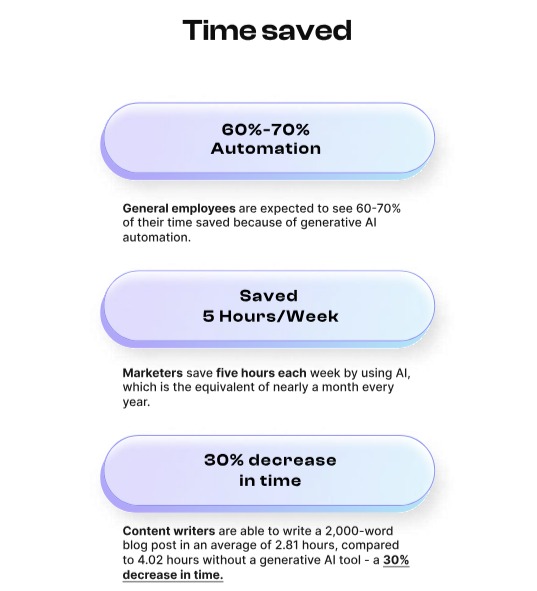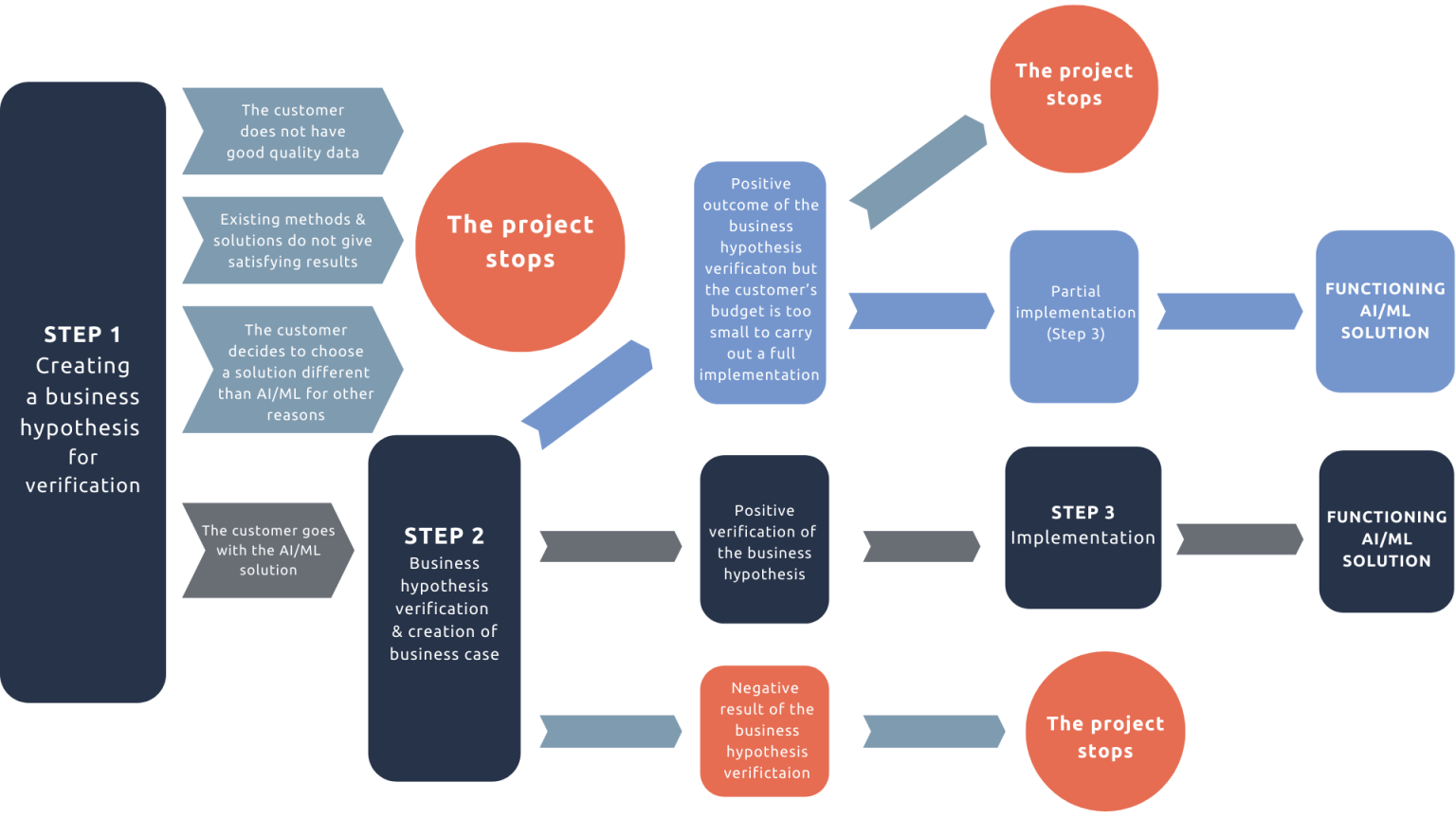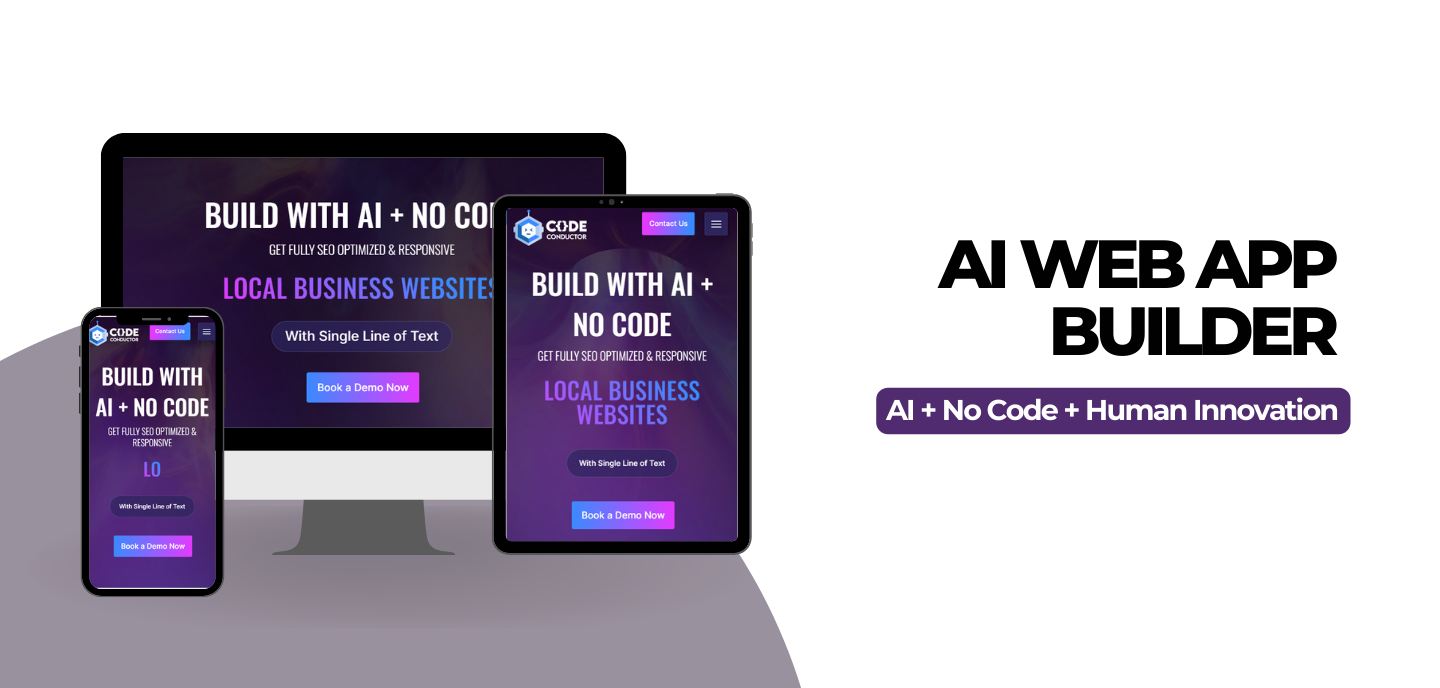How to Implement Generative AI
This is your guide to the challenges, solutions and examples of integrating generative AI into the enterprise.
Generative AI has the potential to revolutionise the business landscape. Enterprises that neglect to adopt this disruptive technology risk falling behind their competitors and missing out on significant opportunities for growth, cost reduction, innovation, and operational efficiency.
Throughout this guide we will cover the potential of AI to improve your business, delve into the common challenges many organisations face and show Generative AI Applications real-life use cases and examples.
? Test Your Knowledge With Generative AI Knowledge Quiz
Absolutely thrilled to offer you an exciting opportunity! Embrace the chance to showcase your AI expertise by taking our interactive Generative AI Quiz.
Prepare to be amazed by how much you’ve learned from our enriching Generative AI blog posts, and let this cutting-edge technology strengthen your understanding. Click below to embark on this thrilling quiz and unveil your AI brilliance!
Contents
Cross Department Impact
Improved efficiency and productivity – Generative AI streamlines content creation processes, automating repetitive tasks, and providing marketers with valuable time to focus on content strategy and innovation. This boost in productivity leads to enhanced output and faster campaign execution.
Time saved – By automating content generation and other marketing tasks, generative AI frees up valuable time for marketing teams, allowing them to allocate resources more effectively and invest in activities that drive better results and higher ROI.
Addressing Challenge
- Time-consuming integration – Incorporating generative AI into existing systems can be a complex process. It requires time and effort to ensure seamless integration and compatibility.
- Employee concern – Introducing generative AI may raise concerns among Company employees about job security or changes in their work roles, necessitating clear communication and training to alleviate apprehensions.
- Cost – Adopting generative AI technology can involve significant upfront and ongoing business expenses. It is crucial to carefully assess the cost-benefit ratio before implementation.
Generative AI Implementation Checklist [ Step-by-Step ]
Step 1: Identify communication gaps
Step 2: Recognise knowledge gaps
Step 3: Calculate speed to execution
Step 4: Appoint advocates and champions
Step 5: Choose a tool-stack
Step 6: Create an on-boarding plan
Step 7: Roll-out and feedback gathering

“There’s no doubt that new Al-driven technology & tools will help writers and editors focus on more strategic parts of writing.” – Joe Pulizzi, Founder, The Tilt & Creator Economy Expo (CEX)

Common Uses of Generative AI in Business
| Department | Use Cases |
|---|---|
| Marketing |
|
| Sales |
|
| Customer Support |
|
| Operations |
|
| Product |
|
| Human Resources |
|
Note: These are just a few examples of how generative AI can be used across different teams. The potential applications are vast and can vary depending on the specific needs and goals of each organisation.
Also Read Related Posts, Such as
- Generative AI in Healthcare
- AI in Cyber Security & Use Cases
- Generative AI for Gaming Industry
- Generative AI in Banking & Finance Industry
- Generative AI in Product Design & Development
Challenges & Solutions of Generative AI Adoption
1. Time-consuming Integration of Generative AI and ML
Challenge: AI must seamlessly connect with various systems, such as CRMs and project management tools, which often vary in data formats, protocols, and architectures. The AI solution must adapt to existing workflows, ensuring minimal disruption to current processes. Additionally, adherence to strict security protocols is essential to protect sensitive data.
Solution: Choosing an AI tool that comes with plug-and-play integration capabilities to common professional tools like Microsoft Office, Google Docs, and Slack.
2. Generative AI at Work: Employee concerns
Challenge: Many employees are apprehensive and fearful about the prospect of being replaced by AI. According to a recent study by Goldman Sachs, AI could impact as much as 300 million jobs, making this a very real and valid concern. For this reason, many employers refrain from implementing AI solutions for fear of backlash or negatively impacting morale.
Solution: Promoting education about solutions that integrate AI as an assistive technology tool, rather than a replacive technology. For more on this, visit the RedBlink’s Generative AI blog.
3. Generative AI Cost as a Challenges
Challenge: Global economic downtrends are seeing many organisations cutting down on expenses. Currently, AI is viewed as a cost-increasing solution rather than a cost- saving solution.
Solution: Adopting a long-term implementation strategy that focuses on out-of-the- box solutions that are able to seamlessly scale as the organisation grows (see checklist below).
Generative AI Implementation Checklist

Earlier, we provided you with a brief overview of this checklist. Now, let’s dive deeper into the implementation of generative AI.
Using this list, you can seamlessly implement AI into your company –
1. Identify Communication Gaps
Generative AI solutions have the ability to assess the communication needs of your organisation. 86% of executives have reported the lack of efficient communication to be one of the main causes of workplace failure.
Language and localisation: What is your employees’ level of English? Compare your global workforce’s proficiency against the required level.
Technical and less-technical communication: Are there gaps in the level of technical proficiency? Align technical and less-technical employee communications.
Communication platforms: Where are your employees communicating? (Slack, Email, Hangouts, etc…)
2. Recognise Knowledge Gaps
Determine the level of information accessibility.
In many organisations, proper documentation is often overlooked, or too complicated for the average employee to comprehend. AI can assist with creation and summarization of organisational knowledge.
3. Calculate Speed to Execution
Before implementing any generative AI tool into an organisation, it’s imperative to assess the speed of execution of any potential AI tool into your unique organisation environment.
Some tools may require extensive resources and time for integration, implicating substantial developer involvement. While other out-of-the-box SasS solutions could offer immediate impact with minimised integration time. In order to ensure a successful integration, a strategic understanding of each tool’s implementation costs — both time and resources — is critical to align the AI solution with the organisation’s resources and timelines.
4. Appoint Advocates and Champions
After gaining a solid understanding of your organisation’s needs and challenges, the next step is to pinpoint your champions — these are individuals who will take ownership of the AI integration process and individuals who will evaluate its success.
Appoint two champions from every department — one for taking ownership and one for evaluating. These key players are tasked with driving the adoption process, monitoring the efficacy of the tool(s), collecting feedback, and communicating with the AI tool provider for ongoing support.
5. Choose a Tool Stack
Once you’ve identified your organisation’s needs and challenges, narrow down your options to a few Generative AI marketing tools that best align with them. It’s imperative to opt for tools that are user-friendly, robust, budget-friendly, and offer sufficient technical support.
Here’s an example of 5 AI tool stack we recommend for cross-department use:
- Content creation: Wordtune
- Image generation: Photoshop
- Video & audio editing: Descript
- Research: ChatGPT
- Meeting summary: Fireflies.ai
6. Create an on-boarding Plan
To ensure a smooth transition of the new tools, develop a plan that includes: defined goals, training, documentation, support, employee communication, and feedback.
7. Roll-out & Feedback Gathering
Pilot test new generative AI tools within select teams or departments. This allows for real-world testing of the tools’ effectiveness and can provide invaluable feedback before an organisation-wide roll out.
Use the feedback from the pilot phase to make necessary adjustments and plan for a gradual and systematic roll-out of the chosen tools throughout the organisation.
Providing ongoing support and training during this process will help ensure that all employees are comfortable with the new tools — encouraging effective usage and ultimately, enhancing productivity.
Organisations That Are Already Implementing Generative AI
1. Natural Intelligence
Natural Intelligence, a world leader in the online comparison-shopping space, relies on generative AI to guarantee that their teams’ written communications are impeccably clear, concise, and fool proof.
“Time is money, and AI helps us save a lot of time. To be confident that your email is well written when reaching out to a new or existing customer, and to know how to use the exact words that that specific customer would like to hear is amazing. It’s an amazing product”.
– Vered Weissberg | Employee Experience Coordinator
2. Hootsuite
Hootsuite is a leading social media management platform, helping companies of all sizes level up their social media game. Within six months of implementing Generative AI, the Hootsuite team achieved their optimal readability score for all Help Center content. The use of AI also resulted in a 25% reduction in the effort required to write and update all user-facing content at Hootsuite.
“Generative AI has proven to be a critical part of our publishing tool kit and has enabled us to achieve our goal in just under six months — guaranteeing our users a content experience that is clear, fresh, and engaging.”
– Gareth Forshaw | Senior Manager, User Education
We at RedBlink provide AI consulting services, as well as build tools that help companies streamline their operations with the help of generative AI.. Companies using our tools have managed to empower employees of all departments, including sales, marketing, support, operations and more.
For more information about implementing AI in your organisation, contact us here.
Additional Resource

Code Conductor is a powerful platform designed to streamline and simplify the AI development process. It offers a range of robust features that enable developers and data scientists to create and deploy AI models effectively.
- It offers Templates For All Industries
- Consultation To Expand business
- Mentorship From App Creators
This website builder empowers you to create stunning websites, web apps, and marketplaces effortlessly, without the need for coding skills.
Code Conductor provides a seamless solution that caters to diverse industries, eliminating the requirement for manual coding.
To know more about Code Conductor Click Here
So, are you ready to build your own generative AI solutions and take your projects to the next level? It’s time to hire a team of ChatGPT developers with expertise in generative AI implementations. Don’t miss out on the opportunity to unlock the full potential of our generative AI Development services and make your projects truly stand out! Contact RedBlink team.

Director of Digital Marketing | NLP Entity SEO Specialist | Data Scientist | Growth Ninja
With more than 15 years of experience, Loveneet Singh is a seasoned digital marketing director, NLP entity SEO specialist, and data scientist. With a passion for all things Google, WordPress, SEO services, web development, and digital marketing, he brings a wealth of knowledge and expertise to every project. Loveneet’s commitment to creating people-first content that aligns with Google’s guidelines ensures that his articles provide a satisfying experience for readers. Stay updated with his insights and strategies to boost your online presence.
